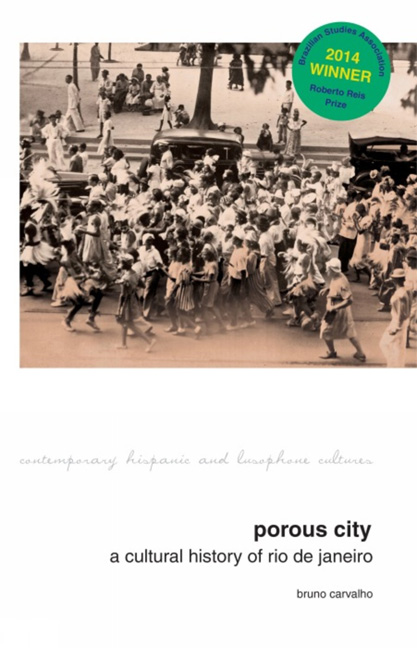Book contents
- Frontmatter
- Contents
- List of Maps
- List of Figures
- A Note on Translation
- Preface
- Introduction: In Search of Things Past: Mapping Rio
- 1 At the Centre of an Imperial Capital: Swamps, Yellow Fever, and Gypsy Parties
- 2 A Master on the Periphery of a Periphery: Popular Music, Streetcars, and the Republic
- 3 Beyond the Belle Époque: On the Border of a ‘Divided City’
- 4 Afro-Jewish Quarter and Modernist Landmark
- 5 Writing the ‘Cradle of Samba’: Race, Radio, and the Price of Progress
- 6 ‘It's (Mostly) All True’: The Death of a Neighbourhood and the Life of Myths
- Conclusion: The Future Revisited: Where Has the Past Gone and Where Will it Go?
- Acknowledgements
- Works Cited
- Index
5 - Writing the ‘Cradle of Samba’: Race, Radio, and the Price of Progress
- Frontmatter
- Contents
- List of Maps
- List of Figures
- A Note on Translation
- Preface
- Introduction: In Search of Things Past: Mapping Rio
- 1 At the Centre of an Imperial Capital: Swamps, Yellow Fever, and Gypsy Parties
- 2 A Master on the Periphery of a Periphery: Popular Music, Streetcars, and the Republic
- 3 Beyond the Belle Époque: On the Border of a ‘Divided City’
- 4 Afro-Jewish Quarter and Modernist Landmark
- 5 Writing the ‘Cradle of Samba’: Race, Radio, and the Price of Progress
- 6 ‘It's (Mostly) All True’: The Death of a Neighbourhood and the Life of Myths
- Conclusion: The Future Revisited: Where Has the Past Gone and Where Will it Go?
- Acknowledgements
- Works Cited
- Index
Summary
Carnival is no more no less than [to take] the street.
DongaStreets are an obsolete notion.
Le Corbusier, The Radiant CityAfter so many modernist artists and writers turned their attention to the Cidade Nova during the 1920s, the neighbourhood was no longer a central space only for marginalized social and ethnic groups. Its role in Rio de Janeiro's lettered cartographies as a place inhabited by the poor, as we have seen, had been cemented. But in the 1930s the Praça Onze assumed a privileged role in narratives that began to define samba as a national genre, and Brazil as ‘the country of carnival’. This was accompanied by an interconnected development, with equally nationwide implications: racial mixture, previously feared and condemned, became increasingly valued by social scientists, musicians, journalists, and others. The case of the Cidade Nova, in this context, can elucidate a contradiction that has not been properly studied: just as the idea of a national identity founded upon mixture gained prominence and acceptance in the 1930s and early 1940s, a combination of technological, urbanistic, and political forces led to a more divided city.
But let us not get ahead of ourselves, since none of this happened overnight. Through careful analysis of sources like magazines and newspapers, Maria Clementina Pereira Cunha (2001) has traced the construction of an equivalence between carnival and nationhood, unveiling the process through which it became legitimized and widely accepted by the 1920s. Not all carnival celebrations were created equally, however. After the Pereira Passos reforms, Rio de Janeiro's carnival split roughly along socio-geographic lines: the private masked balls of European pretensions, attended by the elites and held at places like the Municipal Theatre; the corsos, decorated motor cars parading down Rio Branco Avenue; and, depending on who you asked, the barbarian and anarchic gatherings of the ‘dangerous classes’ or the authentic and spontaneous expressions of Brazil's ‘African’ populations, in the Praça Onze.
The carnival of the Praça Onze became the most popular among the lower classes of Rio de Janeiro not only because of its symbolic status in the ‘Little Africa’, but due to the square's proximity to increasingly populous favelas lacking suitable public spaces and to the Central Station that connected it to the suburbs.
- Type
- Chapter
- Information
- Porous CityA Cultural History of Rio de Janeiro (from the 1810s Onward), pp. 136 - 171Publisher: Liverpool University PressPrint publication year: 2013

